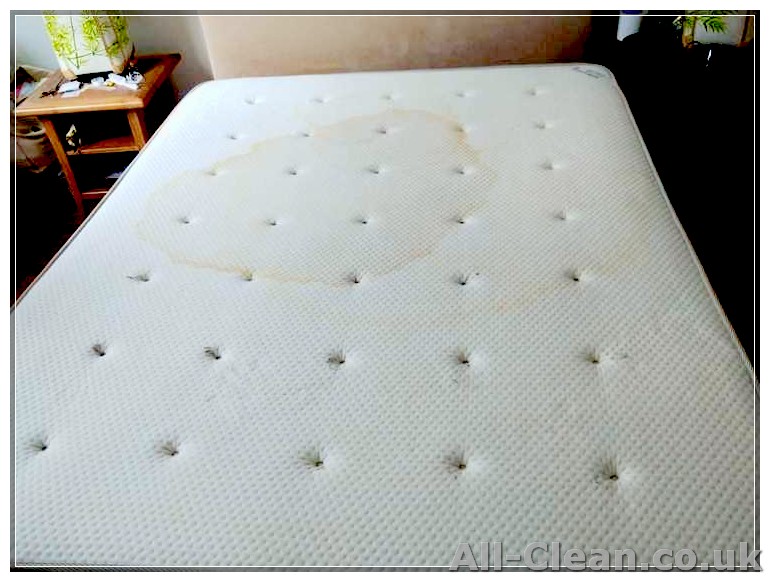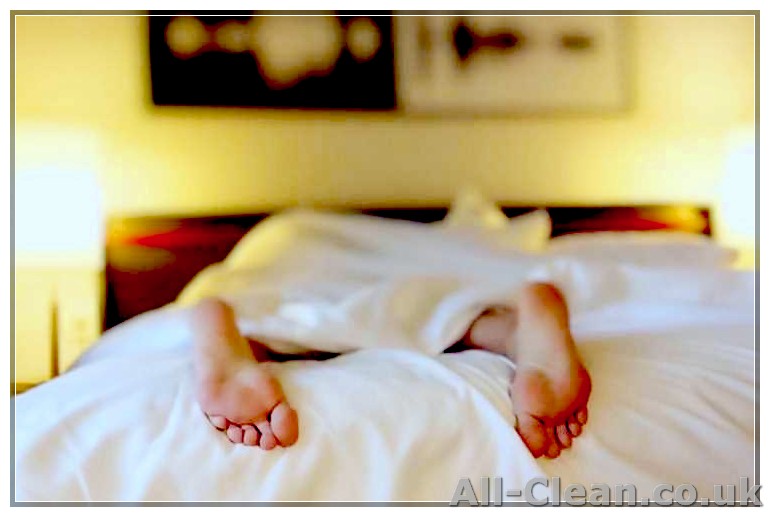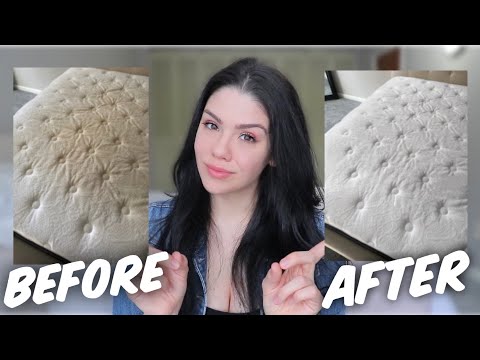
Have you ever wondered why your once fully white mattress has started to develop yellow stains? It can be quite alarming to see these unsightly marks on your otherwise clean and fresh bed. However, understanding the cause and taking appropriate preventive measures can help you keep your mattress spotless and odor-free.
One of the common causes of yellow stains on mattresses is sweat. When we sleep, our bodies naturally release sweat, and over time, this can seep into the mattress fabric, leaving behind yellow stains and unpleasant odors. Exposure to bodily fluids like sweat, vomit, or even urine can also result in the growth of mold and bacteria, further contributing to the yellowing of your mattress.
To remove these stains and keep your mattress fresh and clean, you can use a mixture of baking soda and water. Simply make a paste by mixing these two ingredients together and gently scrub it onto the stain using a soft brush or cloth. Leave the paste on for a while to allow it to thoroughly penetrate the fabric and absorb any odors. Once the paste has dried, you can vacuum it off.
Another preventive measure you can take is to use mattress protectors, which act as a barrier against moisture and prevent stains from setting in. These protectors are easy to wash and can be used on top of your regular bed sheets. Using mattress covers will not only keep your mattress clean but also extend its lifespan.
It’s also important to note that some mattresses may require flipping or rotating from time to time to evenly distribute body weight and prevent the formation of indentations. Following the manufacturer’s instructions and regularly washing your bedding will help maintain the freshness and cleanliness of your mattress.
In conclusion, yellow stains on your mattress can be caused by various factors, such as sweat, bodily fluids, and exposure to moisture. Understanding these causes and taking preventive measures, such as using mattress protectors and regularly cleaning your bedding, can help you keep your mattress fresh and free from stains and odors. Taking care of your mattress not only ensures a comfortable sleeping environment but also helps preserve its warranty and extend its lifespan.
- Understanding What Causes Yellow Stains On My Mattress
- Body fluids and oils:
- Pyjamas and bedding:
- Spills and accidents:
- Dust and allergens:
- Oxidation:
- Preventing and removing yellow stains:
- Taking care of your mattress:
- Possible Culprits and Prevention Tips
- Common Mistakes to Avoid When Cleaning Your Mattress
- 1. Using the Wrong Cleaning Supplies
- 2. Not Tackling Stains in a Timely Manner
- 3. Using Excessive Moisture
- 4. Repeating the Same Cleaning Methods
- 5. Using Inappropriate DIY Techniques
- 6. Neglecting Regular Maintenance
- 7. Not Following Manufacturer’s Instructions
- 8. Ignoring Odors
- Tips to Keep Your Mattress Clean and Stain-Free
- 1. Use Mattress Protectors
- 2. Wash Bedding Regularly
- 3. Vacuum Your Mattress
- 4. Spot Clean Stains
- 5. Use Natural Cleaning Solutions
- 6. Air Your Mattress
- 7. Rotate and Flip Your Mattress
- 8. Follow Manufacturer’s Instructions
- 9. Replace Mattress When Necessary
- 10. Take Precautions While Sleeping
Understanding What Causes Yellow Stains On My Mattress
Yellow stains on your mattress can be unsightly and unpleasant. Understanding what causes these stains can help you prevent them and keep your mattress clean and fresh.
Body fluids and oils:
One of the main culprits behind yellow stains on a mattress is the natural body fluids and oils that we secrete while sleeping. Sweat, urine, and oils from our skin can all seep into the mattress and cause discoloration over time.
Pyjamas and bedding:
Wearing clothes or using bedding that is not properly cleaned can also contribute to yellow stains. Odours and oils from dirty pyjamas or bedding can transfer onto the mattress, causing stains and odours.
Spills and accidents:
Accidental spills of liquids such as coffee, tea, or even blood can leave yellow stains on the mattress. If not promptly cleaned, these stains can gradually become more prominent and difficult to remove.
Dust and allergens:
Dust and allergens can accumulate in your mattress over time. These particles can interact with body fluids and oils, leading to yellowing and staining. Additionally, the presence of dust mites can cause allergic reactions and further contribute to mattress staining.
Oxidation:
Oxidation is another factor that can cause yellow stains on a mattress. Over time, the exposure to air and light can cause the mattress materials to break down and change color.
Preventing and removing yellow stains:
Preventing yellow stains on your mattress is the best solution. Here are some tips to help you keep your mattress clean:
- Use a mattress protector to prevent liquids from seeping into the mattress.
- Wash your bedding regularly, including your pyjamas, to prevent odours and oils from transferring onto the mattress.
- If you suspect a stain on your mattress, act quickly to remove it. Blot the stain with a clean cloth to remove as much liquid as possible.
- Sprinkle baking soda onto the stained area and leave it for a few hours to absorb odours and moisture. Then, vacuum the baking soda thoroughly.
- For stubborn stains, you can create a paste using baking soda and water. Gently rub the paste onto the stain and let it sit for a few hours before vacuuming.
- If the stain and odor remain, mix equal parts of water and vinegar and apply it to the affected area. Blot the area with a clean cloth and let it dry completely.
- If needed, repeat the cleaning process until the stain is gone.
Taking care of your mattress:
In addition to preventing and removing stains, taking care of your mattress can help prolong its life and prevent future staining:
- Rotate your mattress regularly to ensure even wear and exposure to sunlight, which can help prevent discoloration.
- Follow the manufacturer’s instructions for cleaning, and avoid using harsh chemicals that can damage the materials.
- Clean your mattress fully at least once a year, or as needed, to remove any accumulated dust, allergens, and odors.
By understanding the causes of yellow stains on your mattress and implementing preventive measures, you can ensure a clean, comfortable, and odor-free sleeping environment.
Possible Culprits and Prevention Tips
- What causes yellow stains on my mattress?
There are several factors that can contribute to yellow stains on your mattress. These include:
- Sweat and body oils: When you sleep, your body naturally sweats and produces oils. Over time, these can seep into your mattress and cause discoloration.
- Urine: Accidents happen, and if you have children or pets, urine stains may be a common issue.
- Food and drink spills: Eating or drinking in bed can lead to stains if spills occur.
- Bloodstains: Whether it’s from a small cut or a menstrual accident, bloodstains can also cause yellowing.
However, there are preventive measures you can take to minimize the risk of yellow stains on your mattress:
- Sprinkle baking soda: Regularly sprinkle baking soda on your mattress and let it sit for a few hours. This will help absorb any odors and moisture.
- Rotate and flip your mattress: By rotating and flipping your mattress every few months, you can distribute weight evenly and prevent excessive wear on one side.
- Use mattress covers: Mattress covers are a great investment as they act as a barrier between your body and the mattress, preventing stains from forming in the first place. They’re also easy to remove and wash when necessary.
- Clean spills immediately: If any spills occur, blot them immediately with a clean cloth or paper towel. Avoid rubbing, as this can spread the stain further.
- Wash your bedding regularly: You should wash your bedding at least once every two weeks or more often if needed. This will help keep your mattress clean and fresh.
- Replace eventually: Mattresses have a lifespan, and eventually, they will need to be replaced. Regularly evaluate the condition of your mattress, and if it’s causing discomfort, sagging, or has significant stains that cannot be removed, it’s time to consider a new one.
By following these prevention tips, you can keep your mattress clean and free from yellow stains for a longer period of time. Remember, prevention is always better than having to deal with cleaning or replacing your mattress.
Common Mistakes to Avoid When Cleaning Your Mattress
1. Using the Wrong Cleaning Supplies
When it comes to mattress-cleaning, it’s important to choose the right cleaning supplies. Avoid using harsh chemicals or strong detergents that could potentially damage the fabric or affect the mattress’s protective properties. Instead, opt for natural and safe cleaning solutions.
2. Not Tackling Stains in a Timely Manner
One of the biggest mistakes people make is ignoring stains and waiting too long to clean them. The longer a stain sits on your mattress, the more difficult it becomes to remove it completely. To prevent deep staining, tackle any spills or accidents as soon as possible.
3. Using Excessive Moisture
While it’s important to clean stains, using excessive moisture can be counterproductive. Mattresses are not designed to get wet, and excessive moisture can lead to mold or mildew growth, especially if the mattress doesn’t dry properly. Ensure that you use a minimal amount of cleaning solution and allow the mattress to dry thoroughly before using it again.
4. Repeating the Same Cleaning Methods
If a certain cleaning method doesn’t work the first time, repeating it over and over again may not yield the desired results. Each cleaning method should be tailored to the specific type of stain and mattress material. It’s important to try alternative methods or seek professional help if necessary, rather than repeating ineffective cleaning techniques.
5. Using Inappropriate DIY Techniques
While DIY mattress cleaning can be effective, it’s important to know your limits. Some stains may require specialized treatment or professional expertise. Using inappropriate DIY techniques can potentially damage your mattress or void its warranty. If you’re unsure about the appropriate cleaning method, it’s best to consult a professional mattress cleaner.
6. Neglecting Regular Maintenance
Prevention is key when it comes to keeping your mattress clean. Regular maintenance can help prevent stains and keep your mattress in optimal condition. Use mattress protectors, regularly vacuum your mattress to remove any dust or debris, and consider rotating the mattress every few months to distribute the body weight evenly.
7. Not Following Manufacturer’s Instructions
Each mattress may have specific cleaning instructions provided by the manufacturer. It’s important to read and follow these instructions to avoid damaging the mattress or voiding the warranty. Following the manufacturer’s guidelines ensures that you are using the appropriate cleaning techniques and solutions for your specific mattress.
8. Ignoring Odors

If your mattress has a persistent odor, simply cleaning the surface may not be enough. Odors can be caused by various factors, such as sweat, body oils, or even mold. To effectively remove odors, consider using baking soda or an odor-neutralizing spray specifically designed for mattresses. Allow the mattress to air out for a period of time to ensure that the odor is completely eliminated.
By avoiding these common mistakes, you can ensure that your mattress stays clean and fresh for a longer time. Remember to address spills and stains promptly, use appropriate cleaning methods and supplies, and follow regular maintenance practices to keep your mattress in the best possible condition.
Tips to Keep Your Mattress Clean and Stain-Free
1. Use Mattress Protectors
One of the best ways to keep your mattress clean and stain-free is by using mattress protectors. These covers act as a barrier between your body and the mattress, preventing sweat, oil, and other bodily fluids from seeping into the mattress fabric. Make sure to choose a waterproof and breathable mattress protector for optimum protection.
2. Wash Bedding Regularly
Washing your bedding regularly will help remove sweat, body oils, and dirt that can transfer onto your mattress. It is recommended to wash your sheets, pillowcases, and mattress covers at least once a week. Use hot water and an appropriate detergent to ensure a thorough clean.
3. Vacuum Your Mattress
Regularly vacuuming your mattress can help remove dust, debris, and allergens that accumulate over time. Use the upholstery attachment to vacuum both sides of the mattress, paying extra attention to the seams and crevices.
4. Spot Clean Stains

If you notice any stains on your mattress, it is important to act quickly to prevent them from setting in. Blot the stain with a mixture of water and mild detergent, using a clean cloth or sponge. Avoid applying excessive moisture, as it can promote mold growth. Once the stain is removed, deodorize the area with baking soda.
5. Use Natural Cleaning Solutions
Instead of using harsh chemicals, opt for natural cleaning solutions. For urine or vomit stains, mix equal parts of water and white vinegar and apply it to the stained area. Allow it to sit for a few minutes before blotting it dry. You can also use a mixture of hydrogen peroxide and dish soap to remove blood stains.
6. Air Your Mattress
If the weather allows, take your mattress outside and let it air in the sunlight. Sunlight helps kill bacteria and eliminate odors. However, avoid leaving your mattress in direct sunlight for too long, as it can cause the fabric to fade or become damaged.
7. Rotate and Flip Your Mattress
To prevent any single area of the mattress from wearing out faster than others, it is recommended to rotate and flip your mattress regularly. This will help distribute your body weight more evenly and prolong the lifespan of your mattress.
8. Follow Manufacturer’s Instructions
Always refer to the manufacturer’s instructions for specific cleaning and maintenance guidelines for your mattress. Different mattress materials may require specific care methods to prevent damage.
9. Replace Mattress When Necessary
If your mattress is too old, damaged, or has deep stains that cannot be removed, it may be time to replace it. Mattresses should generally be replaced every 7 to 10 years to ensure optimal comfort and support.
10. Take Precautions While Sleeping
To prevent sweat and other bodily fluids from staining your mattress, take some precautions while sleeping. Wear clean, light-colored pyjamas to minimize the transfer of body oils and sweat. Additionally, using a mattress topper or a washable mattress pad can provide an extra layer of protection.
By following these tips and maintaining a regular cleaning routine, you can keep your mattress clean, stain-free, and fresh for a longer period of time.








